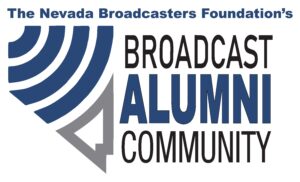
Earlier this week, the FCC’s Enforcement Bureau issued a Notice of Apparent Liability proposing a $25,000 fine on two related companies operating clusters of stations in two small Kansas markets. Those clusters have, because of financial setbacks (leading to bankruptcy), reduced staff so that they no longer have 5 full-time employees at either cluster and thus are no longer subject to the FCC’s EEO outreach requirements. In this Notice, the FCC staff looked back to a few isolated violations in 2020 and 2021, when the stations had 5 or more full-time employees, to justify the proposed $25,000 fine.
The Enforcement Bureau pointed to the late upload to the online public file of three Annual EEO Public File Reports. The Bureau also pointed to the late upload of two Annual EEO Public File Reports at one of the clusters, and one late upload at the other cluster. Both the 2020 and 2021 reports for one cluster were uploaded in June 2021, when the reports were due in February of each year. Thus, one report was 5 months late, the other 17 months late. At the other cluster, the 2021 report was uploaded a year late. There was no allegation that the reports were not completed on time – just that they were not timely uploaded.
The Bureau also found that, at one station, two of its five job openings were filled without adequate outreach. As we have written in prior articles, the FCC requires that broadcasters widely disseminate all job openings unless there are unique situations rendering such outreach unnecessary (e.g., when a station is targeting an individual with unique qualifications and making an opening for that person at the station, rather than hiring for a job opening). Outreach must target all groups within the station’s community. While the FCC allows online recruiting sources to be used (see our articles here and here), in this case one employee was hired without any outreach, and a second was filled with the only outreach being a notice broadcast over-the-air on the station group’s own stations, which the Bureau deemed inadequate.
Finally, the Bureau noted that the licensee could not produce any documents that backed up its claimed outreach for job openings, nor for its recruitment initiatives (stations must, whether they have any job openings or not, conduct non-vacancy EEO initiatives, such as educating the community about broadcast employment opportunities and the qualifications for such positions, and training employees to assume more advanced positions at their stations – see our article here). The FCC staff did not question if those EEO efforts existed – instead it simply cited the fact that the licensee did not produce documents to support its efforts. In addition to these identified violations, the Bureau also found that the licensee failed in its obligation to self-assess its EEO program. This is a typical add-on to any EEO fine as, if you fell short in meeting your FCC obligations, you must have not been self-assessing the effectiveness of the program (as required by the rules) or you would have noted the deficiencies in your performance.
This fine appears to set a new standard for the penalties for FCC EEO violations. In recent years, there have been two fines for broadcast EEO rule violations. In a 2017 case, the FCC’s Media Bureau (which used to oversee EEO violations) proposed a $20,000 fine for a broadcast cluster owned by one of the big public broadcast companies, for what was apparently a complete failure to observe the EEO requirements for a two-year period (see our article here). That same licensee was issued a proposed $32,000 fine last year by the full Commission for more apparent violations, but the large fine was justified according to the FCC, given past violations by the licensee (see our article here on that decision). Prior fines for broadcast EEO violations were significantly lower (see, for example, our article here on fines from 2014). In this week’s decision, the more isolated apparent violations by a Mom-and-Pop, financially distressed broadcaster (a broadcaster no longer even subject to the EEO reporting requirements because it now has fewer than 5 full-time employees), appear to signal a significantly higher standard of enforcement for FCC EEO violations. Broadcasters beware!
Courtesy Broadcast Law Blog


